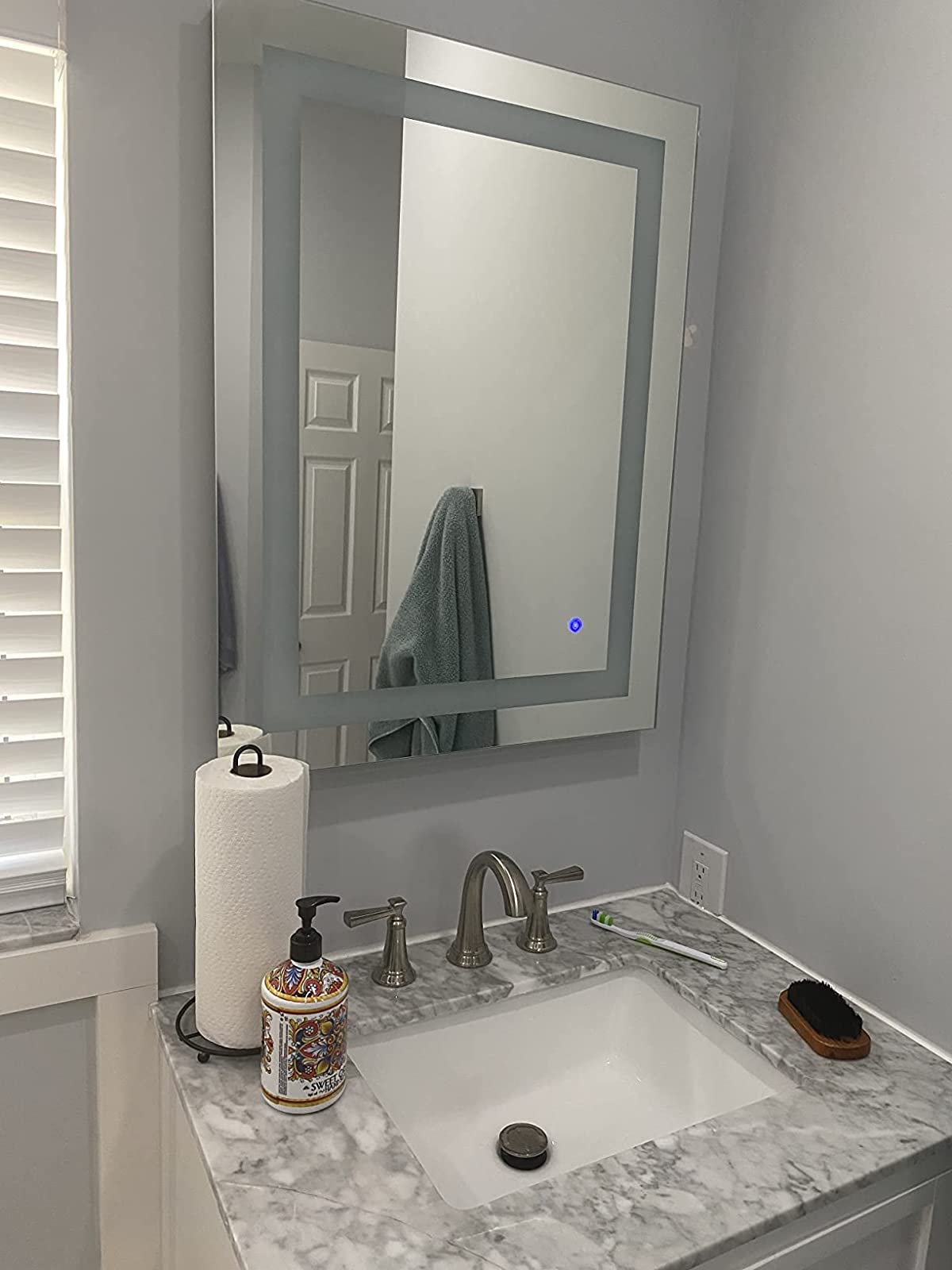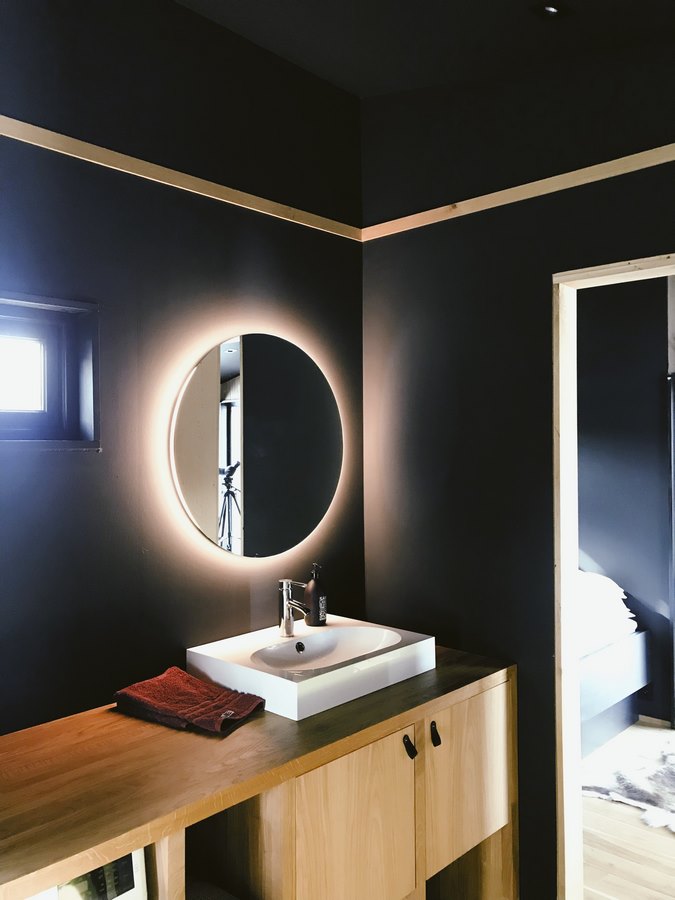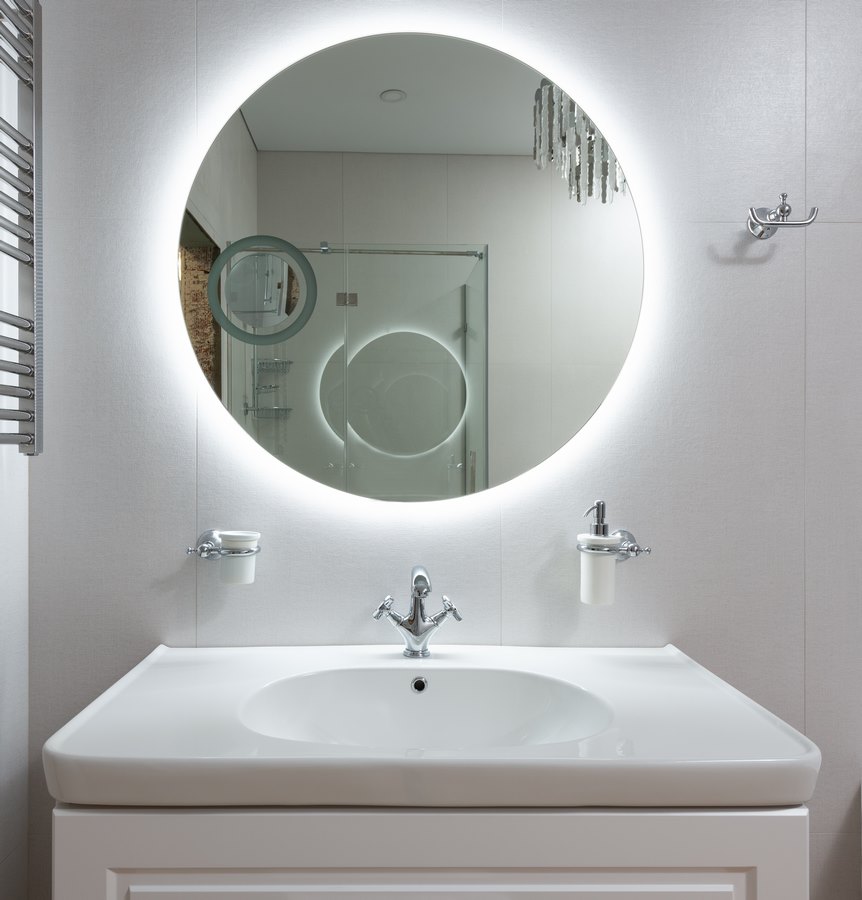LED bathroom mirrors have become increasingly popular in recent years due to their energy efficiency, modern look, and convenience. However, like any other bathroom fixture, LED mirrors can also encounter issues from time to time. In this article, we'll go over seven common LED bathroom mirror problems and provide solutions to help you get the most out of your mirror.
Generally speaking, LED bathroom mirrors are known for their long lifespan, with most lasting anywhere from 50,000 to 100,000 hours.
Assuming an average usage of around 3 hours per day, a high-quality LED bathroom mirror could last for more than 45 years. However, it's important to note that lower-quality products or those subjected to harsher conditions may not last as long.
The lifespan of an LED bathroom mirror depends on several factors, including the quality of the product, how often it is used, and the conditions in which it is installed.
To ensure the longevity of your LED bathroom mirror, it's essential to purchase a high-quality product from a reputable manufacturer and have it installed by a professional electrician. Additionally, avoiding exposure to extreme temperatures and humidity can also help extend the life of your LED bathroom mirror.
LED lights, like any other source of light, can potentially cause damage to your eyes if you are exposed to them for prolonged periods of time or if you stare directly at the light source.
However, compared to traditional incandescent bulbs or fluorescent lights, LED lights are generally considered to be safer for your eyes. This is because LED lights emit significantly less UV radiation and are more energy-efficient, which means they produce less heat.
That being said, some people may experience discomfort or eye strain when exposed to LED lights, particularly if they are sensitive to blue light. This is because LED lights emit more blue light than traditional bulbs, which can disrupt sleep patterns and cause eye strain.
To reduce the potential risks of LED lights, it's recommended to use bulbs with lower blue light output, avoid staring directly at the light source, and take frequent breaks when working in front of LED screens or lighting.

There could be several reasons why your light-up mirror has stopped working. Here are some common reasons why this could happen:
Faulty power outlet: If your mirror is plugged into a power outlet, check that the outlet is functioning properly by plugging in another device.
Loose wiring: Check that the wiring in the mirror is properly connected and not loose. Loose wiring can cause the mirror to malfunction or stop working altogether.
Defective switch: The switch that controls the light may be defective or broken. Try replacing the switch or have it checked by a professional.
Burnt-out LED bulbs: If your mirror uses LED lights, they may have burnt out. In this case, you will need o to replace the bulbs.
Malfunctioning circuit board: If none of the above solutions work, it could be that the circuit board in the mirror has malfunctioned. This will require professional repair or replacement.
If you are unsure about the cause of the problem or do not feel comfortable attempting to fix it yourself, it's recommended to seek the help of a professional electrician or technician.

If your light-up mirror keeps flickering, there could be several possible reasons why this is happening:
Loose wiring: Flickering can occur if the wiring in the mirror is loose or not connected properly. Check that all wires are securely connected.
Faulty switch: If the switch that controls the light is defective or worn out, it can cause the light to flicker. Try replacing the switch.
Voltage fluctuations: If the power source to the mirror is unstable, it can cause the light to flicker. Check that the power source is stable and does not fluctuate.
Dimmer switch: If your mirror has a dimmer switch, the flickering may be due to the switch not being compatible with the LED lights. Try removing the dimmer switch or replacing it with a compatible one.
Burnt-out bulbs: If your mirror uses LED lights, flickering can occur if the bulbs are burnt out. Replace the bulbs and see if the flickering stops.
If you have tried all these solutions and the flickering continues, it's recommended to seek the help of a professional electrician or technician to identify and fix the problem.

There could be several reasons why your light-up mirror is turning dim:
If your mirror uses bulbs, it could be that one or more of the bulbs have burnt out, causing the overall light to become dim. You may need to replace the bulbs.
If your light-up mirror is powered by a transformer or power supply, it may be that it is faulty and not delivering enough power to the light, causing it to become dim.
It is best to refer to the manufacturer's instructions or contact customer support for specific troubleshooting steps for your light-up mirror model.

Yes, you can replace the LED light in your bathroom mirror. However, the process may vary depending on the type of bathroom mirror you have.
If your bathroom mirror has a removable light fixture, you can simply remove the old LED light and replace it with a new one. Make sure to turn off the power to the fixture before removing the old LED light and installing the new one.
If your bathroom mirror has an integrated LED light, the process may be a bit more complex. In this case, you may need to remove the entire mirror from the wall and disassemble it to access the LED light. It's important to follow the manufacturer's instructions or consult a professional electrician to avoid any damage to the mirror or electrical components.
In either case, make sure to choose an LED light that is compatible with your bathroom mirror and meets your lighting needs. It's also important to use caution when working with electricity and to ensure that the power is turned off before beginning any work.
Related Article: how to replace-your-bathroom-vanity(details steps)/
If there's damage to the mirror surface, the best course of action will depend on the type and extent of the damage.
If the damage is minor, such as scratches or small chips, you may be able to repair it using a DIY mirror repair kit. These kits typically include materials like resin, adhesive, and a curing agent that can be used to fill in the damaged area and restore the mirror's surface.
If the damage is more severe, such as a crack or a large chip, it may be necessary to replace the mirror. In this case, you can either replace the entire mirror or replace just the damaged section if it's a framed mirror. To replace the mirror, you may need to remove the mirror from the wall, depending on how it's mounted.
In either case, it's important to take appropriate safety precautions when working with broken glass. Wear protective gloves and eye protection, and use caution when handling and disposing of broken glass.
If you're unsure how to proceed or don't feel comfortable making repairs yourself, it may be best to consult a professional mirror repair or replacement service. They can assess the damage and provide recommendations for the best course of action.

LED bathroom mirrors do not require any special maintenance.
However, like any other bathroom mirror, it is essential to keep it clean and dry to prevent water spots, streaks, and other blemishes.
To clean your LED bathroom mirror, you can use a soft cloth or sponge with warm water and a mild soap solution. Avoid using abrasive cleaners, acidic cleaners, or any cleaning products that contain ammonia, bleach, or alcohol as they can damage the mirror's surface and strip the protective coating.
After cleaning the mirror, make sure to wipe it dry using a clean, lint-free cloth. You can also use a microfiber cloth to eliminate any remaining water droplets or streaks.
If you notice any discoloration or cloudiness on the mirror's surface, you can use a mixture of equal parts white vinegar and water to remove it. Spray the solution on the mirror and wipe it clean with a soft cloth.
Regular cleaning and proper maintenance of your LED bathroom mirror can help prolong its lifespan and keep it looking new for longer.
Related Article: How to maintain your bathroom cabinets (especially wood styles)

In conclusion, if you're experiencing problems with your LED bathroom mirror that you can't solve on your own, don't hesitate to seek professional help. From faulty wiring to damaged components, there are a variety of issues that can affect the performance of your mirror. Look for a qualified technician with experience working on LED lighting systems, and be prepared to provide detailed information about your mirror and its symptoms. If you're experiencing issues with your LED bathroom mirror, reach out to a qualified repair technician for help. Or contact us for specific guidance.
Copyright 2022 - All Mirplusbath